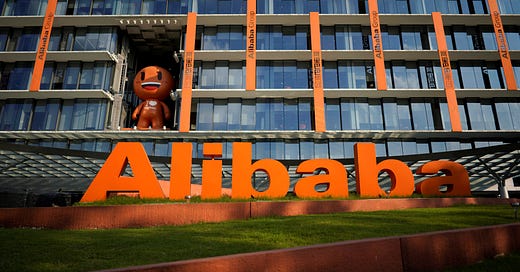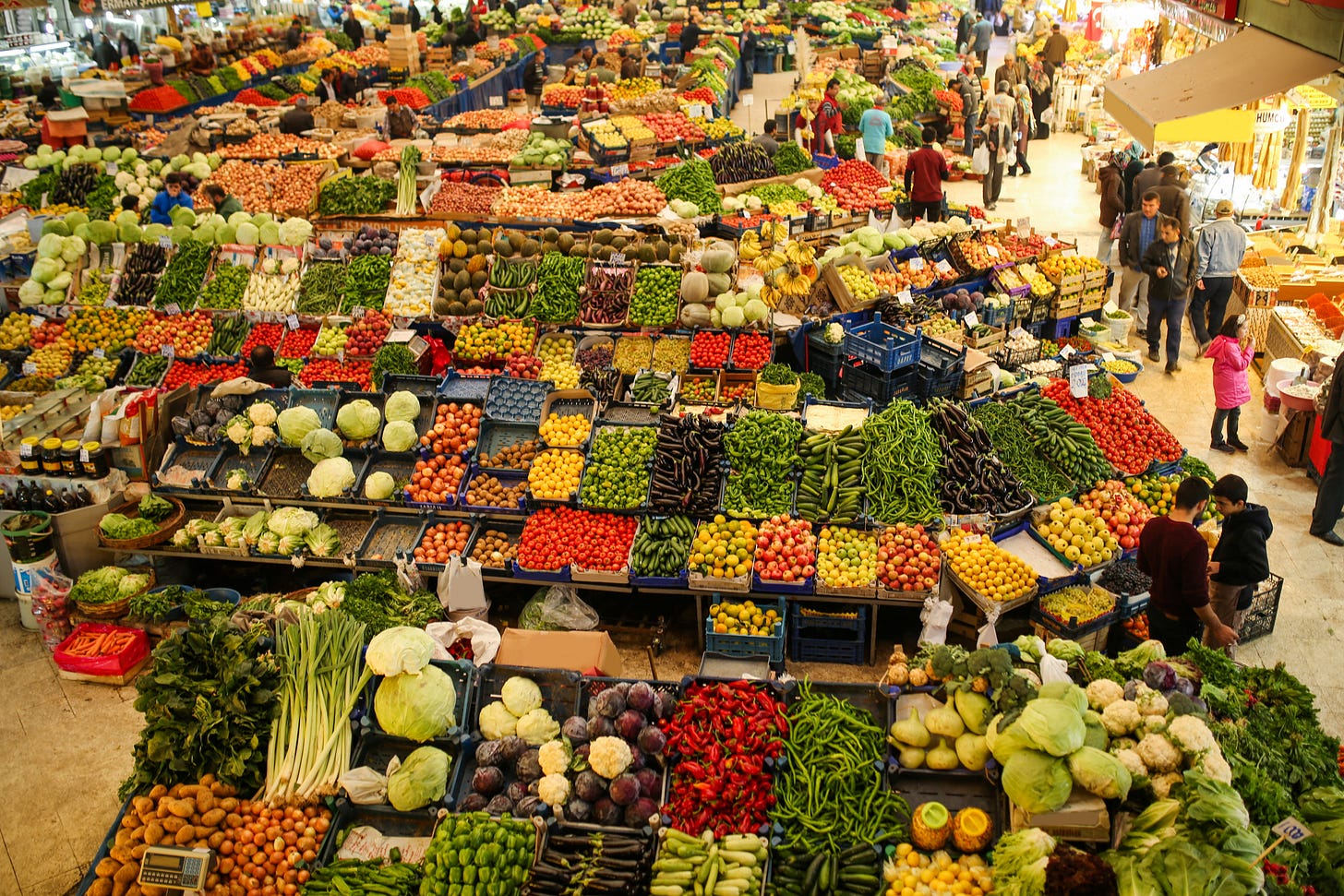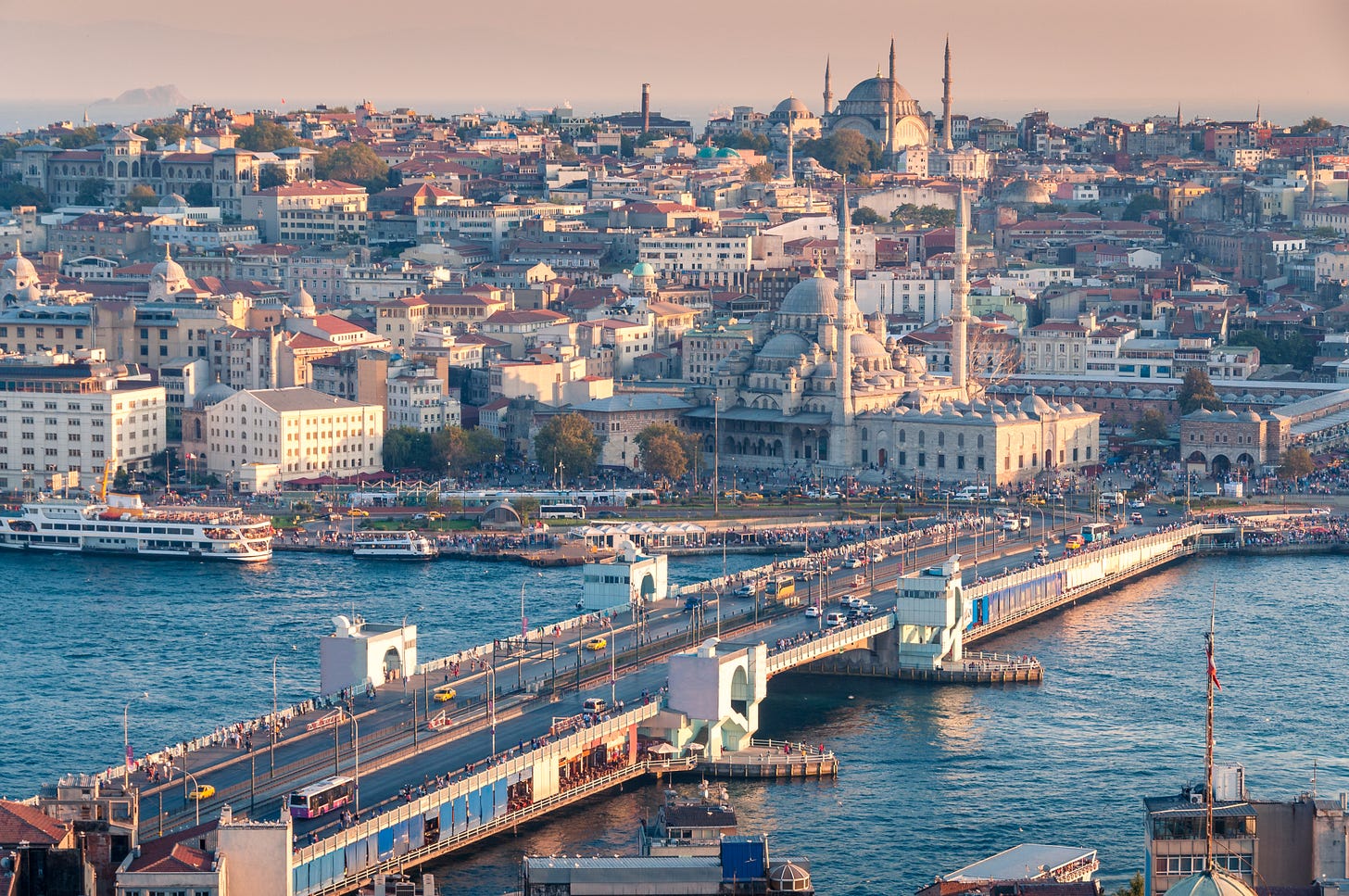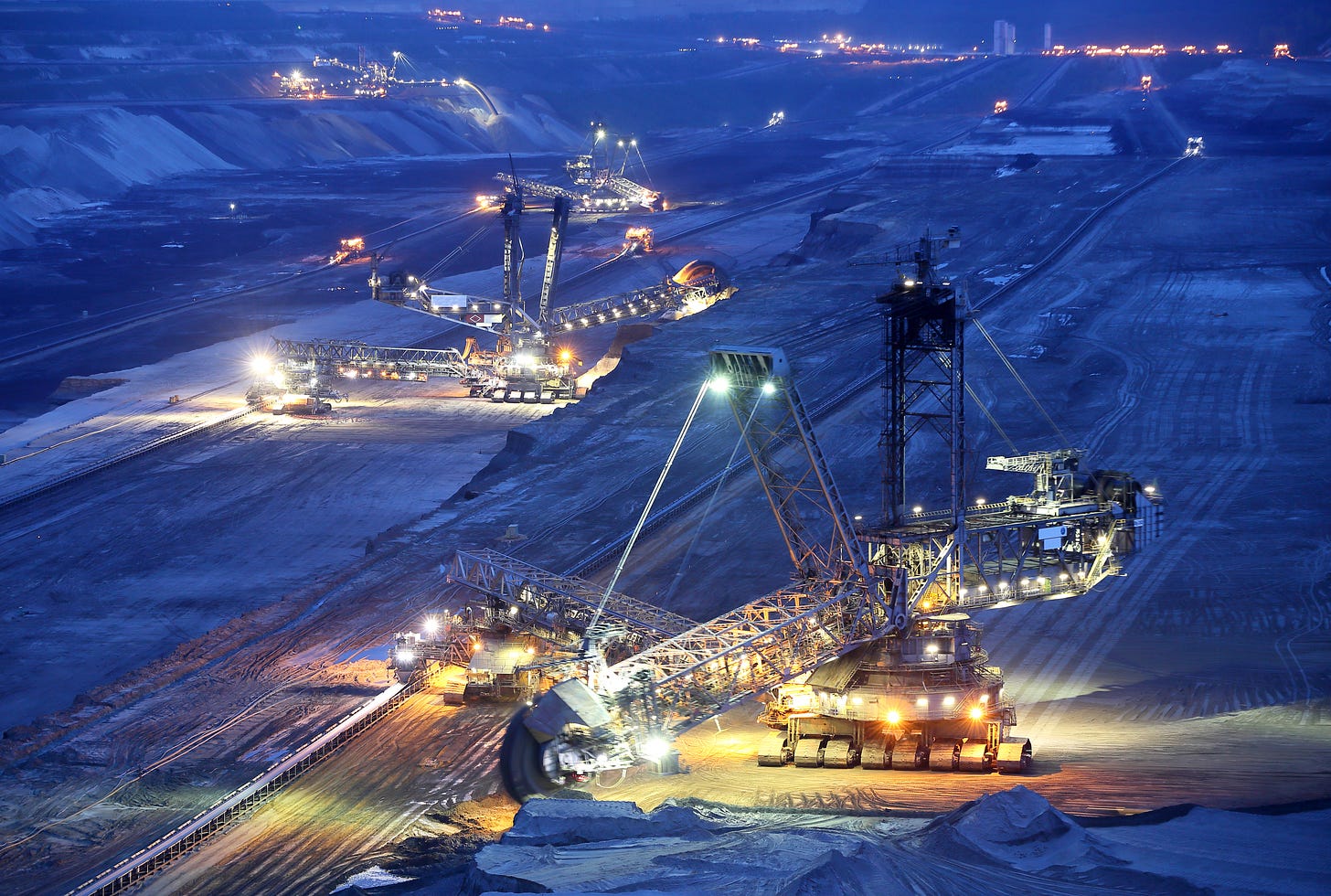Emerging Markets Monitor - August 29
Falling China Stocks Entice Investors, El Nino and Food Prices, Investors Eye Turkey After Big Rate Hikes, Global Recovery Challenges, Hydrogen Demand and Platinum
The Top 5 Stories Shaping Emerging Markets from Global Media - August 29
Slumping China Stocks Attract Value Investors
Wall Street Journal
“Portfolio managers say that investors who are still eager to get exposure to China are increasingly turning to value investing. That is a style of stock picking that focuses on finding shares trading below what they are really worth—based on several different measures—rather than looking for companies with big growth potential.”
“The shift in emphasis from growth to value reflects the stark change of fortunes for China’s economy, which is faltering after years of breakneck growth. Exports and manufacturing have weakened this year, the housing market is in a funk and consumer prices have moved into deflationary territory. While U.S. stocks have surged this year, the MSCI China Index, a broad gauge of Chinese shares, is down more than 7%.”
“…Growth stocks in China performed better than value stocks for decades, said Nuno Fernandes, partner and equity portfolio manager at Boston-based GW&K Investment Management. But since February 2021, they have started to do a lot worse, he said.”
“The downturn in China’s economy and its stock market means even companies that once seemed natural growth plays are attracting value investors. Alibaba Group, the giant Chinese internet company, was one of the major success stories of China’s decadeslong economic boom. But its U.S.-listed shares have lost almost two-thirds of their value since the end of 2020, when Beijing launched a yearslong regulatory crackdown on internet companies. Its shares are now trading at a price of around 10 times forward earnings, according to FactSet.”
“…Ryan Cohen, known as a meme-stock investor for his bets on GameStop and other companies, has taken a stake worth several hundred million dollars in Alibaba, The Wall Street Journal previously reported.”
“Fund managers said social-media giant Tencent is another example of a stock with both growth and value characteristics. The company’s stock-market value jumped by half in 2020 but has tumbled since then. It lost a quarter of its value last year, and is now trading at a price of around 17 times earnings.” Weilun Soon reports.
El Nino Storm Clouds Gather Over Global Food Prices
Financial Times
“This year’s El Niño weather event is expected to compound the effects on global food prices of India’s rice export ban and Russia’s withdrawal from the Black Sea grain deal, potentially stoking inflation across emerging markets.”
“Starting in September, the natural temperature fluctuation in the Pacific Ocean known as El Niño is forecast to bring months of extreme heat to parts of South Asia and Central America, as well as heavy rainfall over the Andes.”
“The phenomenon typically disrupts crop cycles and is likely to add further strain to global food output and prices after heavy rainfall forced India to ban exports of non-basmati white rice and Russia bombarded Ukrainian grain terminals.”
“Combined, the three shocks could boost household inflation expectations in poorer countries where food typically comprises around 30 per cent of typical spending on consumer goods and services — double the figure for developed economies.”
“That spillover could increase pressure on emerging market central banks to keep interest rates higher for longer, sparking volatility in local equity and sovereign bond markets priced for rate cuts later this year.”
“…The moves by India and Russia are already beginning to be seen in global food prices. The United Nations’ FAO food price index fell 26 per cent between March 2022 and June but rose 1.3 per cent in July, as vegetable oil prices jumped 12.1 per cent. International wheat prices rose 1.6 per cent, their first month-on-month increase since December, while the FAO All Rice Price Index increased 2.8 per cent to its highest level since September 2011.”
“Expect higher demand for fertiliser, pesticides and genetically modified seeds, said Ehiwario Efeyini, senior market strategy analyst at BofA. ‘Equities along the agribusiness supply chain, including machinery, chemicals and processing, also stand to be beneficiaries,’ he added.”
“However, the impact on global inflation from ‘a large El Niño could spread beyond just food’, according to JPMorgan. The bank’s analysis of a World Bank data set of commodity prices stretching back to the 1960s found that El Niño events — which typically occur twice a decade — correlate with higher global prices for rubber, timber and zinc.”
“In Australia, El Niño tends to bring heavy rainfall to the western Pilbara region, home to vast reserves of iron ore. Australia accounts for roughly 60 per cent of the seaborne iron ore market, meaning higher prices in the event of weather-induced disruptions.”
“…Parts of Central America where El Niño is expected to bring extreme heat are already contending with a drought so severe that authorities at the Panama Canal — whose system of locks and reservoirs relies on the availability of freshwater — have been forced to cut the number of daily crossings.”
“‘We are now in a world fraught with risks, and higher prices’, said Joe DeLaura, senior energy strategist at Rabobank. ‘We are facing a world where the Rhine depth at Kaub, Panama Canal transit numbers and reservoir stockpiles will be monitored as closely as the [US Energy Information Administration’s] petroleum reports every week.’” George Steer reports.
After Turkey Giant Rate Hike, Investors Mull Return
Reuters
“Turkey's latest massive interest rate hike has caught the attention of long-sceptical foreign investors who say they could return to Turkish assets if authorities continue to demonstrate that a return to orthodox monetary policy is underway.”
“The lira rallied as much as 7% on Thursday after the central bank shocked the market by lifting its key rate by 750 basis points to 25% - three times the size of the expected move.”
“Turkey's top officials say that they plan to take two more vital steps to reverse a years-long exodus of foreign investment as well: they will publish a comprehensive economic programme next month that will reduce uncertainties; and they will begin holding meetings with investors abroad.”
“Finance Minister Mehmet Simsek will kick off the investor roadshow on Sept. 19 at Goldman Sachs headquarters in New York, Reuters reported on Friday. Though the tide may be shifting, persuading investors will not be easy: Foreigners had all but abandoned Turkey over the last five years of President Tayyip Erdogan's unorthodox and often erratic policies, which included slashing interest rates in the face of soaring inflation.”
“Yet five foreign investors told Reuters that this week's rate hike signalled a new independence among policymakers who are serious about addressing unrelenting pressure on the currency and reining in inflation expectations.”
“…The central bank said on Thursday it will hike rates more as needed and JPMorgan predicted they will hit 35% by year-end.”
“With inflation seen rising to near 60% by the end of the year from almost 48% last month, the rate hikes partly narrow the gap.”
“Though Turkey's international bonds are widely held and form part of key indexes, the country has struggled to lure foreign investors back into its domestic bond markets after a series of lira crises and de facto capital controls.”
“Foreigners hold less than 1% of Turkish bonds, down from 10% in 2019 and 20% in 2015, official data shows. Over the last three months, bonds saw only $110.5 million in cumulative foreign inflows, while stocks saw a rush of $1.7 billion.”
“After meetings in New York and at the United Nations - which Erdogan is also expected to attend - Simsek listed plans for trips to London and an International Monetary Fund event in Morocco, as well as other meetings in Japan, Singapore and Hong Kong by the end of the year.” Reuters reports.
Debt, Trade Wars and Weak Productivity Challenge Global Recovery
Reuters/The National
“Record levels of government debt, geopolitical tensions that threaten to split the global trading system and the likely persistence of weak productivity gains may saddle the world with a slow-growth future that stunts development in some countries even before it starts.”
“That sobering view of a post-pandemic global economy emerged from research organised by the Kansas City Federal Reserve and debated here this past weekend.”
“…China is now suffering what may be chronic economic problems, along with a shrinking population. Emerging industrial policies in the US and elsewhere are reordering global production chains in ways that may be more durable or serve national security ends but also be less efficient.”
“Economists and policymakers here appeared in rough consensus that two trends from before the pandemic, both with global-growth implications, had been intensified by the health crisis and other recent events.”
“After rocketing higher during the global financial crisis 15 years ago, the ratio of public debt to world economic output has grown to 60 per cent from 40 per cent thanks to pandemic spending and could now be at a level where serious debt reduction is not politically feasible, Serkan Arslanalp, an economist at the IMF, and Barry Eichengreen, an economics professor at the University of California, Berkeley, wrote in a paper.”
“The implications of public debt that is ‘here to stay’ varies by country, they said, with higher-debt but higher-income nations such as the US likely able to muddle through over time, while smaller nations perhaps face future debt crises or binding fiscal constraints.”
“…The other pre-pandemic trend that has endured and intensified is a rising openness to policies that range from the outright protectionist tariffs imposed under former US president Donald Trump to Biden administration efforts to steer production of commodities such as computer chips back to the US.”
“White House Council of Economic Advisers chairman Jared Bernstein said at the symposium that the US's industrial policies weren't necessarily tilted either for or against more international trade, since many of the intermediate goods needed to make silicon chips, for example, would be imported.”
Reuters reports via The National.
As Hydrogen Supply Chain Rises, Platinum Could See Elevated Demand
Mining.com
“The emerging global hydrogen supply chain is essentially ‘made of platinum,’ declares Bank of America Global Research commodities strategist Michael Widmer, coauthor of the bank’s Global Metals Weekly report.”
“If proton exchange membrane electrolyzers (PEMs) become the dominant method for hydrogen production by 2030, grabbing about 70% of the market, it would result in an additional 778,000 oz. of metal demand. However, in an accelerated scenario aiming for net zero emissions, this demand could catapult to 2.4 million ounces.”
“Historically, hydrogen production mainly depended on nickel-containing alkaline water electrolyzers (AELs). There has been a marked shift towards adopting platinum-intensive PEMs in recent years. PEMs currently constitute 32% of all electrolysis installations worldwide.”
“…According to Widmer, current projections indicate that global electrolysis capacity could double annually, potentially hitting 205 gigawatts by 2030. This is a profound increase from the under-1 GW mark recorded in 2022.”
“Regarding electrolyzer production, China is a dominant player, holding a 55% market share, with Europe and the U.S. collectively comprising 40% of global manufacturing capacity.”
“Europe has been proactive in its approach to green technologies. Germany, for instance, has revised its domestic electrolysis capacity target for 2030 to 10 GW, up from the initial 5 GW. Additionally, Europe is investing heavily in infrastructure, planning to establish a hydrogen pipeline network of approximately 33,000 km by 2030, which is expected to expand to 58,000 km by 2040.” Henry Lazenby reports.
A pessimist sees the difficulty in every opportunity; an optimist sees the opportunity in every difficulty. - Winston Churchill







